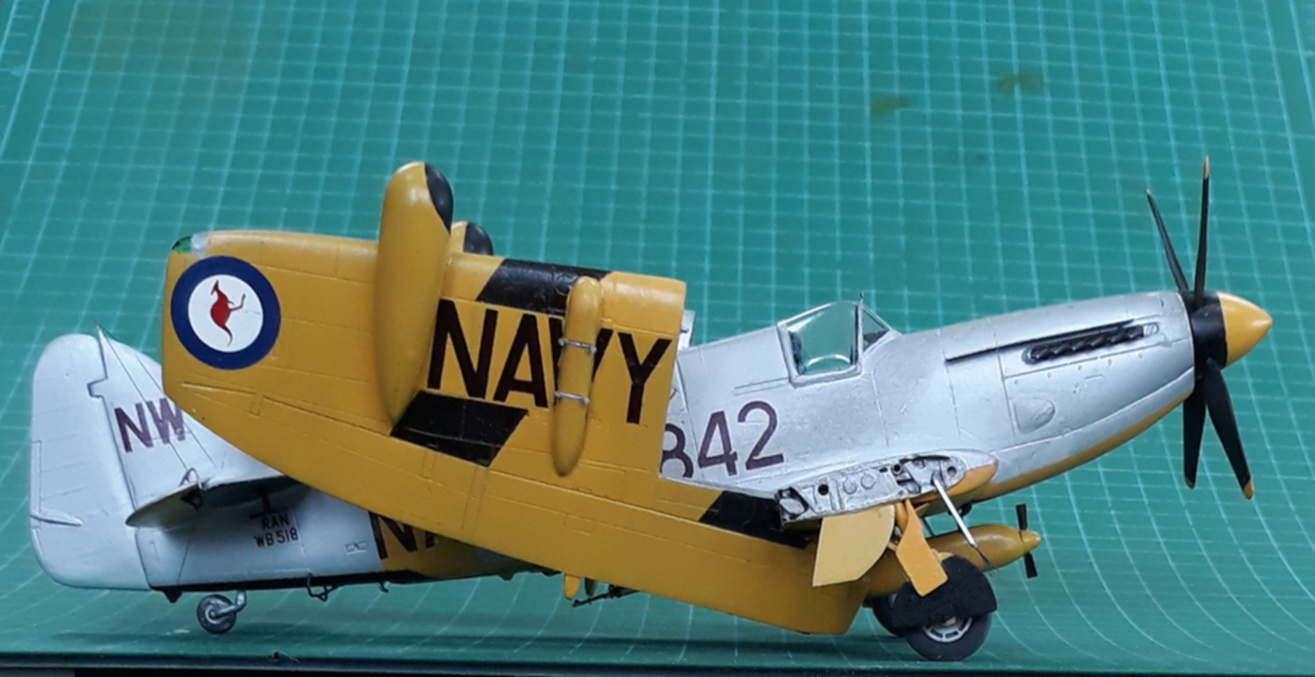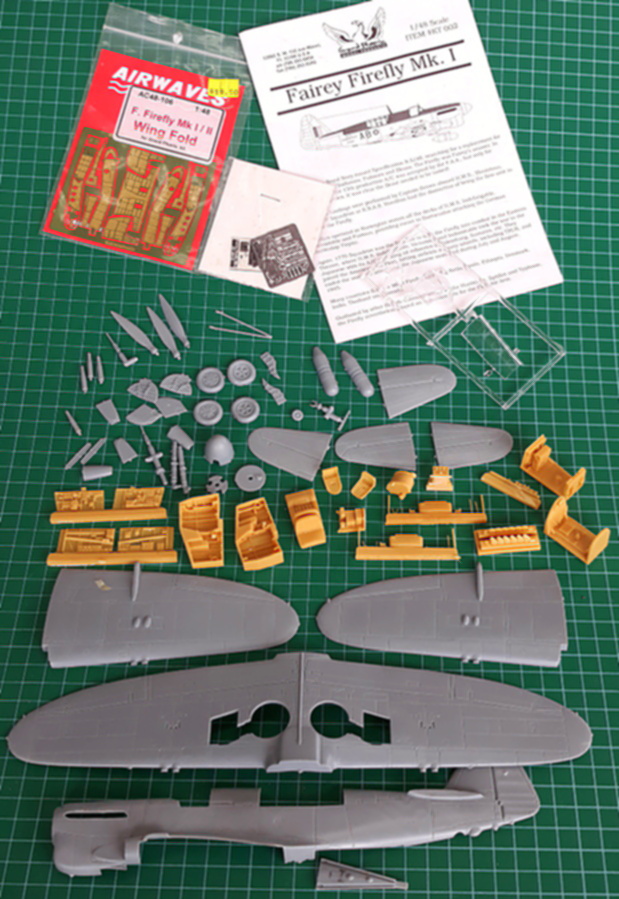
A sideview of Peter's completed model Photo:P.Malone.
by Peter Malone

A sideview of Peter's completed model Photo:P.Malone.
RAN FAA
The RAN first acquired an interest in naval aviation just prior to World War I. In May 1913 naval strategist, Commander Walter Thring, RAN, advocated for the acquisition of 'water-planes', and the following year the First Naval Member, Rear Admiral Sir William Creswell, RAN, recommended that the 1914-1915 estimates allow for the establishment of an Australian Naval Air Service. Without British support, which the RNAS was unable to provide, the proposal went no further.
The RAN's interest in aviation grew more over the course of the war. Naval aviation found a champion in the form of Captain John Dumaresq, RN, HMAS Sydney's Australian-born Royal Navy Captain. Dumaresq was at the forefront of the campaign to develop an embarked aviation capability in the Empire's cruisers.
In 1920, a deployment of an Avro 504 floatplane aboard HMAS Australia and HMAS Melbourne was attempted. This proved to be unsuccessful as the aircraft were not built to withstand the rigours of handling on a naval ship. Undeterred, in April 1921, the Australian Government announced its intention to acquire 12 Fairey IIID seaplanes for service with the RAN, a number that was later reduced to six due to financial constraints. The six aircraft arrived in Australia in late 1921 but were placed under the operational control of the RAAF.
The RAN had not given up its ambition to establish an air arm and, on 16 June 1925, the following order was promulgated:
Two new County Class cruisers, HMA Ships Australia and Canberra , were to be constructed to the tonnage limits of the Washington Treaty, and both would be able to launch aircraft from a catapult. It was further suggested that the RAN might take up a merchant vessel modified as a seaplane carrier. However there was major inter-service rivalry with the Air Board interpreting the order as establishing a FAA on the British model, i.e. within the RAAF and under RAAF control, whereas the Naval Board interpreted it as establishing the new branch within the RAN. Ministerial approval for the establishment of a FAA in the RAN was given in January 1925. Then on 10 June 1925, six days before the order establishing an FAA was promulgated, the Governor-General, Sir Henry Forster, while opening Federal Parliament, announced the Government's intention to construct a seaplane carrier at Cockatoo Island Dockyard.
However, wrangling between the Naval and Air boards over control of the FAA continued. The final result was that the RAN FAA was disestablished at a meeting of the Federal Cabinet on 18 January 1928. It was not until twenty years later, after World War II, that the RAN was finally able to establish a Fleet Air Arm in 1948. It's initial equipment was motley collection of ex RAAF used for training purposes. The first operational aircraft were Hawker Sea Furies and Fairey Firefly aircraft which were embarked on HMAS Sydney in March 1949 and she then sailed to Australia.
My model will represent one of those Firefly aircraft, albeit as a target tug, some ten or so years later.
IN THE BEGINNING:
There was the PP Aerokit, AK001, Fairey Firefly FR4/5 purchased circa 1994. This was a ground breaking kit for its time and very detailed for a ‘cottage industry’ product. It was multimedia having the fuselage and wings vac moulded, some 40 odd metal parts, 90 odd etched parts, and 20 resin parts. As can be seen in photo below, I did start the kit, cutting out the vac formed parts and doing a little work on the cockpit. Then, for reasons I no longer recall, (I think moving from one country to another may have had something to do with it), it was relegated to the shelf of doom.
THEN CAME:
What I thought was a great bargain at a 'Swap and Smell'. It was the, then relatively new, Grand Phoenix Firefly MK.1 kit. I bought with the intention of cross-kitting. I could replace the vac-formed parts of the PP kit with the injection moulded parts of the GP kit. The engine could be replaced with one cut from the PP kit and the latter would also provide the radiators and clipped wingtips. Seemed like a great idea until I realised that the GP kit was missing one fuselage half. Oh, s..t! I'd been dudded! So the project went even further to the back of the shelf of doom.
FINALLY, INSPIRATION!!
BM started a group build "Here Comes the Fleet Air Arm". I consulted with our esteemed moderator and it was ruled that the RAN FAA also qualified. So, out from the dusty recesses of the shelf of doom, my Firefly kits saw the sunshine again. Yes, I could have gone out and bought a newer kit, but I had these two, and I do call myself a modeller, although same may dispute that. Anyway, I like a challenge, so here goes. The build will be a Royal Australian Navy Fleet Air Arm Fairey Firefly T.T.6. I had yet to decide which particular A/C.
Putting together some reference material. Thanks are also due to @navy840 and @RAL who have both been a font of ideas and a great source of information re Aussie Fireboxes. I then sorted out which machine I would model.
Click on the 'Next' button to go to Page 2 of the article
"The Naval board have decided to establish a Fleet Air Arm of the Royal Australian Navy, based, as far as practicable, on the scheme adopted in the Royal Navy."



